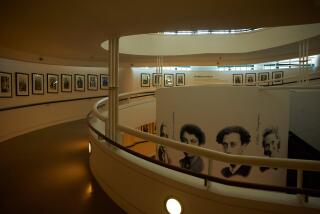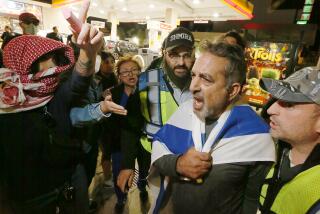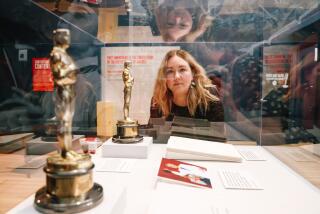Can Tolerance Be Taught?
- Share via
Hate crime was back in the spotlight this week when a white supremacist in Texas was found guilty of chaining a black man and dragging him behind a truck until his head was ripped off. In Los Angeles, a program is attempting to counter racism in those who commit lesser hate crimes by sentencing them to community service in programs that promote understanding. Peter Carlos Cobian of Highland Park was recently sentenced to 1,000 hours of community service at the city’s Museum of Tolerance after the 18-year-old pleaded guilty to committing a hate crime. Cobian, who admitted attacking a black ex-schoolmate while uttering racial slurs, must work at the museum. RACHEL FISCHER spoke with the museum official who oversees this program.
*
MARCIA CHOO
Director of museum programs; an expert in conflict resolution
In these cases, we generally start with our “Tools for Tolerance,” an eight- to-10-hour educational program that is funded by grants. It’s a certified course we usually give to professionals in law enforcement, public education and social welfare. Private corporations also take the training, as well as medical students. We also get a few individuals who’ve been ordered here by their employers for having made sexist or racist remarks on the job.
The course starts with a special guided tour of the Museum of Tolerance, followed by a facilitated dialogue in which everyone talks about what they saw and how they feel. The museum, for those who have never been, is a very forceful experience and generally leaves people in a raw emotional state.
My first case was a young man in his 20s who was convicted of hate crimes and an assault in the gay community. He’d been ordered to come here for one visit, and I walked through with him to make sure he wasn’t just going through the motions. We had a pretty intense session with him in which he was asked to explain the connection between what he saw in our exhibits and what he had done. At certain points, I thought that he got it, but then he’d revert to making ignorant statements.
I had mixed feelings about our results in that case; it’s so difficult for us to tell when we’ve had success. Even though we most likely didn’t change his entire life, it’s a start. When else would he be confronted with questions about racism and tolerance?
Peter Carlos Cobian will probably end up doing physical work around here when he’s done with the initial program.
Several years ago, we had a group of skinheads from Long Beach. They’d been discovered by the FBI in a plot to blow up a black church and to mail letter bombs to rabbis.
As part of their sentences, they had mediated sessions here with black and Jewish community leaders. I know that we made an impact on several of these young people’s lives. One man, a Holocaust survivor, showed them a picture of his well-scrubbed family and asked, “Why would you want to kill my grandchildren?” One of the offenders ended up maintaining a long-term correspondence with one of staff members, who was also a Holocaust survivor.
The skinheads got to put a human face, a personality, on those whom they had written off and were planning to kill. But will 10 hours prevent you from reverting to your old ways once you’re back out in society? It takes a lifetime of work if you grew up in an environment of hate.
The only thing I can confidently say is that we’re playing a small, small role in changing things. I think there will come a day when the criminal justice system will decide that incarceration is not enough, and it will become public policy for hate-crime offenders to participate in programs like this.


